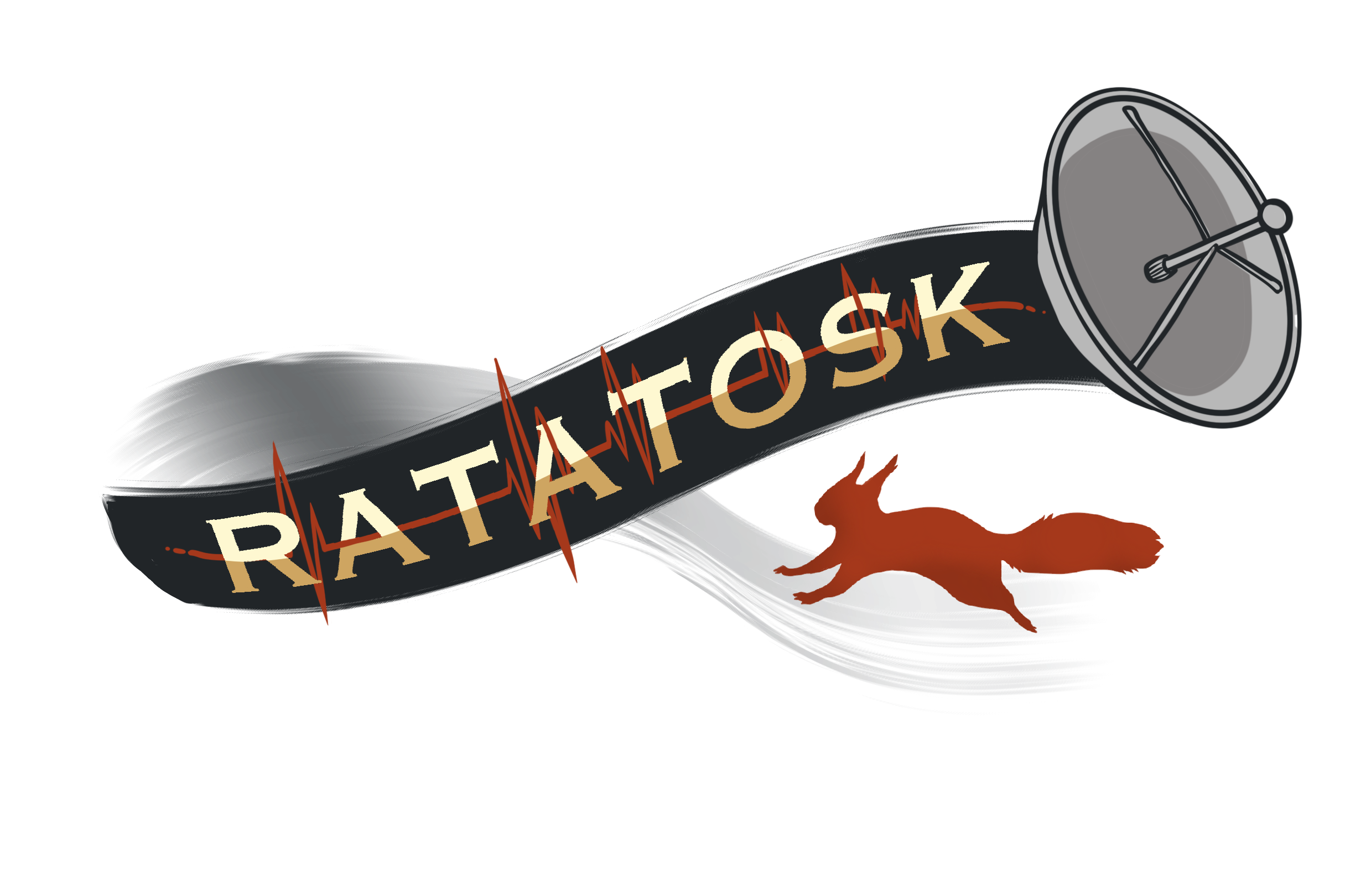RATATOSK
High-Bandwidth Thermal Imaging from the Stratosphere
RATATOSK is a Danish student-led aerospace experiment designed to demonstrate real-time, high-bandwidth data transmission from the stratosphere using X-band radio frequencies. Developed for the BEXUS 36/37 mission under the REXUS/BEXUS programme, RATATOSK integrates advanced radio frequency (RF) communication with thermal infrared imaging to enable Earth observation and ecological monitoring from approximately 25 kilometers altitude.
The project aims to address a key technical challenge in remote sensing from high-altitude platforms: reliable, high-rate data transmission from a moving, unstable platform with limited power availability. RATATOSK’s solution is a custom-engineered X-band (8 GHz) radio link, capable of streaming thermal images in near real-time to a ground station, even under the dynamic conditions of balloon flight.
Scientific and Technical Background
Stratospheric High-Bandwidth Communication
High-altitude balloons (HABs) occupy a unique operational range—significantly higher than UAVs but below low Earth orbit (LEO) satellites—making them ideal for intermediate-scale Earth observation missions. However, they pose unique communication challenges:
- Variable link distances (up to 500 km)
- Rotational motion and drift affecting antenna orientation
- Severe power constraints due to size, weight, and available energy
- Need for directional antennas to maintain high gain and reduce thermal noise
To overcome these, RATATOSK employs four patch antennas arranged to provide omnidirectional coverage in the Earth-facing plane. The system uses up/down-conversion circuits and a custom-designed RF chain optimized for low noise, energy efficiency, and link robustness. A dedicated ground station tracks the balloon and decodes the incoming X-band data stream, while the BEXUS E-link system serves as a telemetry and command fallback.
Thermal Imaging in the Long-Wave Infrared (LWIR) Window
The project’s secondary payload is a thermal imaging unit operating in the 8–14 µm range, often referred to as the “infrared atmospheric window.” This wavelength range minimizes scattering and absorption in the atmosphere, enabling clearer thermal images from 25 km altitude.
Thermal imaging is used to monitor wildlife during the balloon’s flight, particularly in Arctic regions such as Kiruna, Sweden. Reindeer and similar animals are known to emit significantly more thermal radiation than their surroundings, making them visible with a properly calibrated sensor. The emission data is governed by the Stefan-Boltzmann law, which links emitted radiation to the fourth power of surface temperature. Even small temperature differences can result in detectable thermal signatures.
Mission Objectives
- Technological Validation
Validate the use of a directional, high-frequency radio link (X-band) for live data transmission from a balloon-borne platform. The system includes:- Custom RF front-end design
- Link budget analysis and optimization
- Onboard error detection and data buffering
- Ground station reception and decoding system
- Ecological Observation
Utilize thermal imaging to detect, count, and localize wildlife from the stratosphere, opening up new methods for non-intrusive environmental monitoring, especially in remote and inaccessible regions. - Hands-On Systems Engineering
Provide students with direct experience in aerospace engineering, including:- RF systems design and testing
- Embedded systems and image processing
- Power budgeting under environmental constraints
- Balloon mission planning, integration, and operation
System Architecture
Onboard Components:
- Thermal Camera Unit
Captures LWIR imagery for ecological monitoring. - Data Handling Unit (DHU)
An onboard computer system that processes images, applies compression, and manages data flow to the communication system. Includes local storage for redundancy. - X-Band Communication System
Four patch antennas oriented for ground-facing omnidirectional coverage. The system includes a modulator, upconverter, power amplifier, and a frequency-stable local oscillator for reliable signal generation. - Power System
Includes batteries and optional solar panel support. A strict power budget ensures efficiency during the flight, especially during ascent and float when solar input is variable.
Ground Segment:
- Ground Station Unit
A custom-designed receiver system with a high-gain antenna, demodulator, and decoding pipeline capable of handling X-band input and reconstructing transmitted data in near real-time. Real-time image reconstruction and downlink verification tools are implemented. - BEXUS E-Link Interface
Provides low-bandwidth communication for telemetry and experiment control, as well as backup image transmission in the event of X-band link failure.
Flight Campaign and Integration
The experiment will be flown aboard a stratospheric balloon from Esrange Space Center, near Kiruna, Sweden, as part of the BEXUS 36/37 campaign. The project has successfully passed multiple design reviews, including the Critical Design Review (CDR) hosted at ESA ESTEC in the Netherlands, where the team received valuable technical feedback from experts in RF systems, aerospace integration, and balloon operations.
Educational and Research Impact
RATATOSK serves as both a technology demonstrator and an educational platform. It bridges the gap between classroom theory and real-world aerospace applications, allowing students to contribute meaningfully to ongoing challenges in high-altitude data collection, wildlife monitoring, and communication engineering.
The experiment also lays groundwork for future research into:
- Low-power high-frequency telemetry
- Balloon-based environmental monitoring
- Scalable RF system architectures for remote sensing platforms

